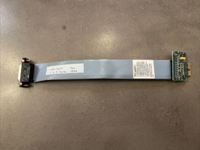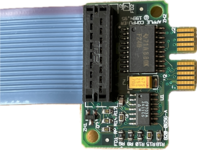I want to record the screen from my Macintosh Performa 5200. For that I need the mirror-cable. I've been able to video capture my PowerBook 5300 with a chain of PB5300 -> MacDB -> VGA -> HDMI -> USB HDMI Capture Card -> MacBook Air, and planning to do the same (maybe there are better ways?).
I have two questions on this one. First, reading the developer notes: it is a cable + a video buffer. Would it have any performance impact or limitations? (
I found the cable on ebay from US, but the import processing fee they charge in Spain will make it not affordable (will be almost better to get a 6200 in Europe and record from the main screen of that one instead).
So I'm wondering if any other computer used this same cable? (I first thought the 6200 perhaps had it for its main video output, but seems not).
Extract from developer notes:
Image of the cable from ebay:

I have two questions on this one. First, reading the developer notes: it is a cable + a video buffer. Would it have any performance impact or limitations? (
I found the cable on ebay from US, but the import processing fee they charge in Spain will make it not affordable (will be almost better to get a 6200 in Europe and record from the main screen of that one instead).
So I'm wondering if any other computer used this same cable? (I first thought the 6200 perhaps had it for its main video output, but seems not).
Extract from developer notes:
The Power Macintosh 5200 uses a feature, called video display mirror output, to make
the video information on its built-in monitor available to an external monitor. This
means that the information displayed on an external monitor is a mirror image of that
displayed on the built-in monitor. This feature is implemented by plugging an optional
video buffer board into the 22-pin Video Mirror connector on the main logic board
Image of the cable from ebay:


